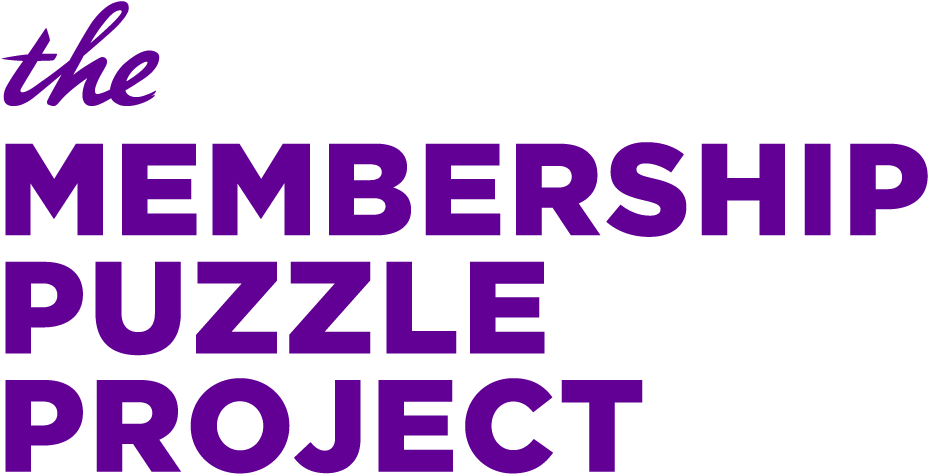While their job titles vary, including editor, community manager, and membership director, audience-facing staff at sites around the world have told us they could benefit from a professional community around membership in news.
While they think they can learn a great deal from experts on these topics in other industries, news has some peculiarities that warrant special focus (among them: working in an intense deadline driven-environment—and in an industry that currently suffers from serious survival and financial viability concerns).
After learning about this need, today we’re excited to introduce the Membership Puzzle Project research affiliate program. Over the next year we’ll be studying what it means to create a tight-knit community of practice around membership in news.
We’ve invited five initial affiliate sites that represent national, regional, hyperlocal, interest-based, and foreign national newsrooms. The sites joining us this month are:

The Texas Tribune
A member-supported, nonpartisan newsroom headquartered in Austin, Texas, focusing on informing Texans about public policy, politics, and government news.
City Bureau
A self-described “civic journalism lab” based in the South Side of Chicago focusing on equitable local media coverage and civic participation.
Chalkbeat
A national network of education news sites focused on in depth, local coverage of efforts to improve schools for all children. Currently covering developments in New York, Colorado, Detroit, Indiana, and Tennessee.
La Diaria
An independent newspaper headquartered in Montevideo, Uruguay, organized as a worker’s cooperative and focused on civic and organizational transparency.
De Correspondent
A member-funded Dutch news site that focuses on context and insightful content rather than the daily news cycle. They are aiming to launch an English-speaking site, The Correspondent, in 2018. (De Correspondent is also New York University’s partner in the Membership Puzzle Project.)
All of these organizations are at different points in their membership program evolution (from well-established to not-yet-launched) and serve different editorial and member interests. As a group, we hope to identify and explore the factors that matter most in creating robust membership programs.
We’re looking to offer a forum for these sites to learn from each other and to also work on one challenge or question that’s specific to their newsroom’s membership. We’re highly interested in sharing some collective learnings for other sites’ benefit, too. Amy Ashida, a Master’s candidate in the School of Visual Arts Interaction Design program, is joining us to manage the program.
This affiliate program is partially inspired by positive feedback we’ve heard from participants of programs including the Institute for Nonprofit News, the News Revenue Hub, and the Shorenstein single issue news site project. We’re told that there is great appeal in learning from and with other publishers, especially when it isn’t clear who to talk to about email conversion rates and related topics within a newsroom. (Kristen Hare has written about this for Poynter.) While the set of participating sites is limited and doesn’t include the many (many!) sites we’d like to invite due to our small team’s bandwidth, we’ll work inclusively when it comes to publishing what’s working. We hope to convene other groups of publishers in the future.
The program isn’t intended to be a fundraising bootcamp or a mini MBA. The affiliate sites have identified five core topics for our time together:
-
Growing a membership-focused team and culture. Whether they’re just launching membership or have been in the game for a while, all affiliate sites are working on building membership programs that can scale with their organizations and help sustain their editorial goals. We’ll focus on how to staff membership teams, generating interest in membership across the organization, and delegating membership-related tasks to other staffers as efforts expand.
-
Finding the best tools to manage member relationships. Involving members in news sounds great, right? Yet when it comes to actually managing those relationships there is no shortage of potential challenges, including limited time. Together we’ll discover how to balance member input and ideas and which tools work at different reporting stages.
-
Identifying the most relevant audiences for growth and engagement. Some organizations have a deeper understanding of what their audiences want now than ever, but we can all use help to identify the people who might offer ideas, expertise, and money. As a group we’ll share ways to identify and engage audiences with the goal of boosting commitment on both sides.
-
Learning from startups and other organizations beyond news. Organizations including faith-based communities, unions, and arts institutions have used membership models for hundreds of years. Many startups are also thinking about the future of audience-funded journalism. We’ll be asking plenty of questions of analogous organizations in this space.
-
Setting effective goals and pricing models. In research director Emily’s neighborhood in Brooklyn there is a regularly parked car bearing a bumper sticker that reads “MONEY MONEY MONEY COME TO ME.” While this program will cover much more than cash, it’s also imperative to study revenue generation. We’ll share what works — and what doesn’t — for launching new campaigns and testing pricing strategies across different markets. (Side note: if you have seen this bumper sticker or know how to get them, please get in touch with us).
As we look towards 2018, we’re excited to get to work with and study these affiliates. We welcome your input and questions throughout the process, and we have a Twitter list to follow their progress. What membership software has been most effective for your newsroom? What tools are you most curious about? What questions do you have for these sites, and which expert guests would we be remiss not to hear from? Please share your thoughts in the comments or via email.
Happy December…and until next year!




